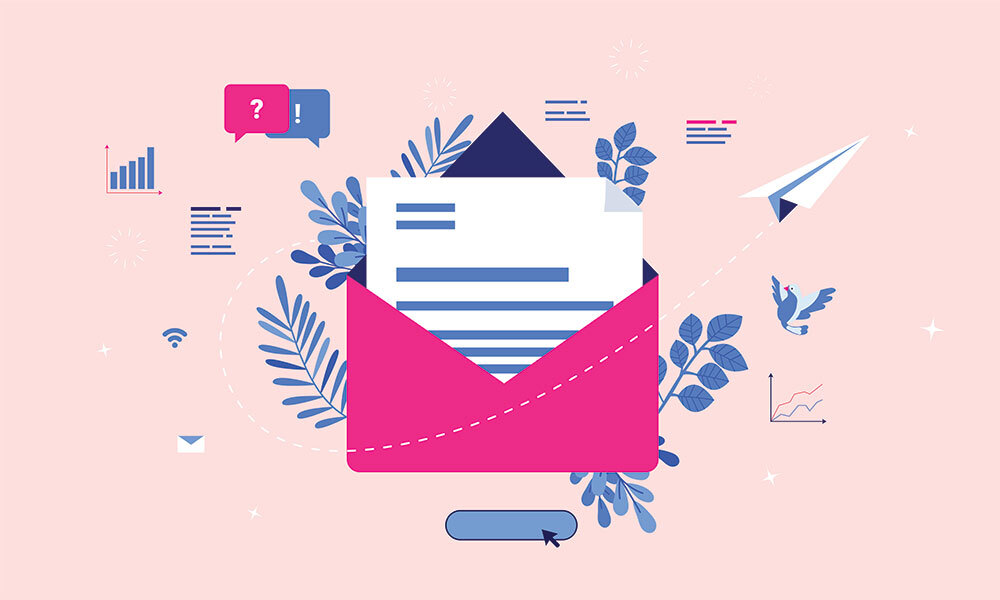
The Newsletter Trend Is Hot Right Now. Does Your Association Need a Strategy Refresh?
Competition is mounting in people’s inboxes—an area associations have long dominated. A mix of good data and a great newsletter strategy can help your organization’s emails rise to the top.
By Melissa Bouma
The average person’s inbox is a battle for attention. Each day, a new message emerges to ask for a moment of your time, your attention, and potentially your clicks.
And that demand for your eyeballs and brainpower is growing, with newsletters seeing a significant rise in popularity as individual journalists and niche publications embrace the tool to reach passionate, frequent readers. Tools like Substack and Ghost are just as trendy as social networks like TikTok. While some suggest that “peak newsletter” has already come and passed, the fact remains that many are still finding success with this model.
And while associations have been mining this territory for decades, a 2021 Litmus study found that more than 90 percent of marketers said email was at least somewhat essential to their companies’ success. Many even described it as their most effective platform.
With this added bit of competition, it’s a smart time to look at your newsletter strategy and figure out what’s working and what might need a refresh.
Here are a few things to think about as you analyze your efforts:
Understand Circadian Rhythms
Newsletters such as Morning Brew and theSkimm win over readers by being a small, consistent force in their lives. We’re all creatures of habit, and building a message that ties into that habit, with a consistent send time, is a sure way to build stronger member engagement. Your association might consider grabbing the morning slot as everyone is swinging into work mode for the day.
Understand the Audience
Habit is only one part of the equation. Your newsletter needs to deliver real and consistent value, which requires understanding what your audience wants.
That’s where data comes into play, and why it’s important to ask questions about your readers’ interests and professional knowledge. This sort of data-gathering is essential to building a stronger newsletter, and it has long driven email strategies. For example, A/B testing—a compare-and-contrast method used to figure out the most effective subject lines and send times—is an approach you may be using already (and if you’re not, you should be).
Of course, associations, with their deep knowledge of their members, are in a position to go further than that, personalizing messages based on members’ specific needs, perhaps through the use of artificial intelligence. If a member likes technology, for example, the message should lead with technology; if they’re into marketing, the message should feature marketing content.
An even more personal touch to your newsletter can work, too, as more intimate appeals also do well in email. That doesn’t mean simply whipping up a single-person Substack newsletter (though you could). A good example: Robinhood Snacks, a newsletter from a popular investment app, puts its own witty spin on investing, setting its newsletters apart from those of other financial organizations.
Understand the Technology
Another factor to be aware of in the newsletter space involves the ongoing technical shifts with email.
In the past, the big concerns around email involved sending messages that didn’t hit your members’ inboxes or unfixable errors that got through the editing process—or that Outlook or Gmail unwittingly mangled your message before it hit the inbox. (Technical knowledge matters!)
Broader shifts in the email market now may force your organization to embrace new tactics or find new metrics. When Apple introduced a feature to iOS called Mail Privacy Protection last year, it caused problems for newsletter creators who were once dependent on having significant data access. The technology created challenges for tracking open rates—and made click rates more important.
Understand What Makes Sense for You
External competition, Apple’s changes, and people’s ongoing thirst for the most up-to-date knowledge should be fueling you to reexamine your newsletter tactics. There will be new strategy considerations as a result, and you may need a strong partner to help you figure out the best way forward. One last thought to consider: Maybe email isn’t the best platform for what you’re trying to say at all. Maybe the message you’re trying to send works better on social media, or even in print (yes, people still read things on paper!).
Whatever steps you take to boost your newsletter strategy, know that the message itself only gets you so far. It’s your content strategy and genuine, consistent value that will ultimately win the battle for the inbox.
Melissa Bouma, CEO of Manifest, has more than 15 years of experience building insight-driven branding and content strategy, with a client base representing large companies, major universities, and prominent associations.
(Overearth/iStock/Getty Images Plus)





